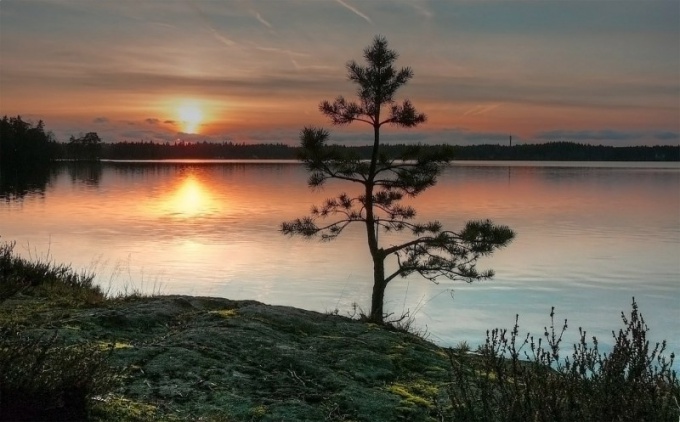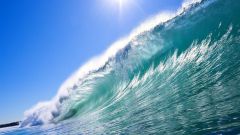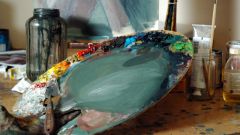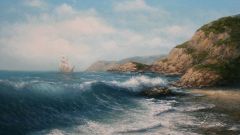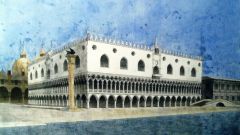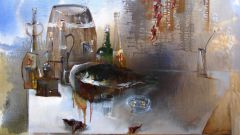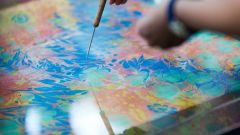You will need
- - a sheet of paper;
- - watercolor;
- brush;
- - a sponge or swab;
- water;
- - solid simple pencil.
Instruction
1
For watercolor preliminary sketch do not necessarily. If you still not very confident in their capabilities, make a very light, barely visible sketch. For example, draw a horizon line, if you're going to paint the sea. For lake or river lightly mark the outlines. If you are going to draw a glass or jug, sketch outlines, and a thin line indicate the surface of the water. It will be an ellipse, parallel to the bottom or top edge of the glass.
2
Consider a transparent glass of water. You will see that his glass, which has water and where it is not transparent do not differ much from one another. But the outlines of objects appear different. The texture of the water is visible on the surface - it may be barely noticeable ripples. Draw the contours of the glass with a brush, some not very bright color - pink, cream, bluish or grayish depending on the lighting. The bright part in the center and the edges take a darker, imposing several layers of watercolors of the same color. The lower part of the glass where there is water, a little potemneti. You can add some other light colors. Do not be afraid that you have something to smear. The beauty of watercolor is unexpected, but smooth transitions. On the surface of the water make some thin light strokes parallel to the walls of the glass.
3
Most surface water is easier to paint than a brush, and sponge. Wet the entire area you intend to paint. For example, it can be the sea from the bottom of the sheet to the horizon. Then wring the sponge head on it paint the base color. The shade depends on what kind of sea you draw. For example, the Baltic sea will be the main tone gray and Black or Mediterranean - greenish. "Sea do" can be anything.
4
The water surface is almost never perfectly calm. It always has waves, although they can be very small. Apply a thin brush a few intermittent wavy horizontal lines. Take the paint a little darker than the main tone. Note that when you draw water employs the same laws of perspective, as everywhere. That is, the distance between the waves which are closer to the viewer, will be greater than between those that you see in the distance. The waves on the shore or directly from the spacecraft will be cooler. Long waves draw slightly wavy. At the horizon, they almost merge with each other.
5
Pass play of light. Determine where the sun or moon. In this part of the sea add some yellow, orange or silver. Form of the light spots depends entirely on your imagination. The edges of these spots must not be harsh, so dilute them with a brush.
6
Pond or lake, draw on the same principle as the sea. Only in this case it is necessary to designate the line of the shore. Waves will be parallel to it, not the lower edge of the sheet. Don't forget that trees and buildings on the far Bank seem to be very small, and the water around them almost smooth.
7
At the river you have to pass the direction of the current. Sketch its outline. Far it seems to be more narrow than right in front of you. The surface of the water fill with the help of foam or a cotton swab just as you did when drawing the sea. From the narrowest point of the guide a thin brush somewhat divergent discontinuous wavy lines. Blur their contours too with a brush or swab. Mark the shaded areas (e.g., shade from trees) a darker shade of the same color.
Note
To draw water by wet and dry paper. It depends on the nature of the landscape. If you want to make color transitions more abrupt, it is better to draw on dry paper.
